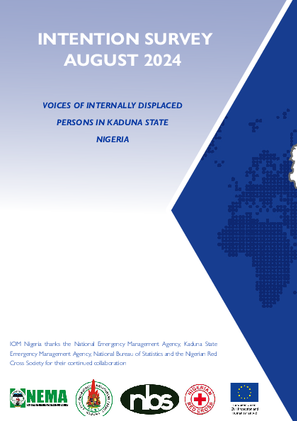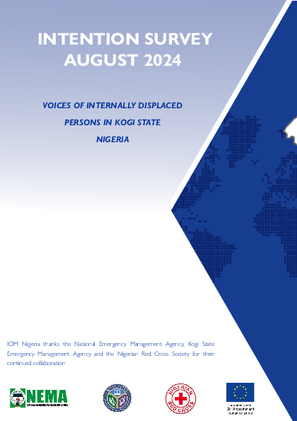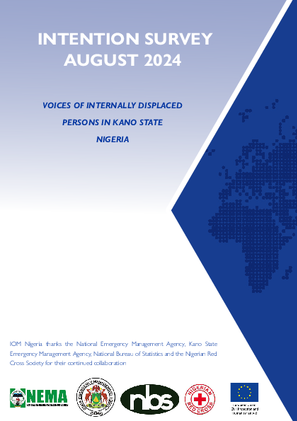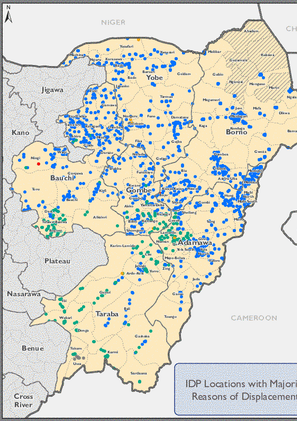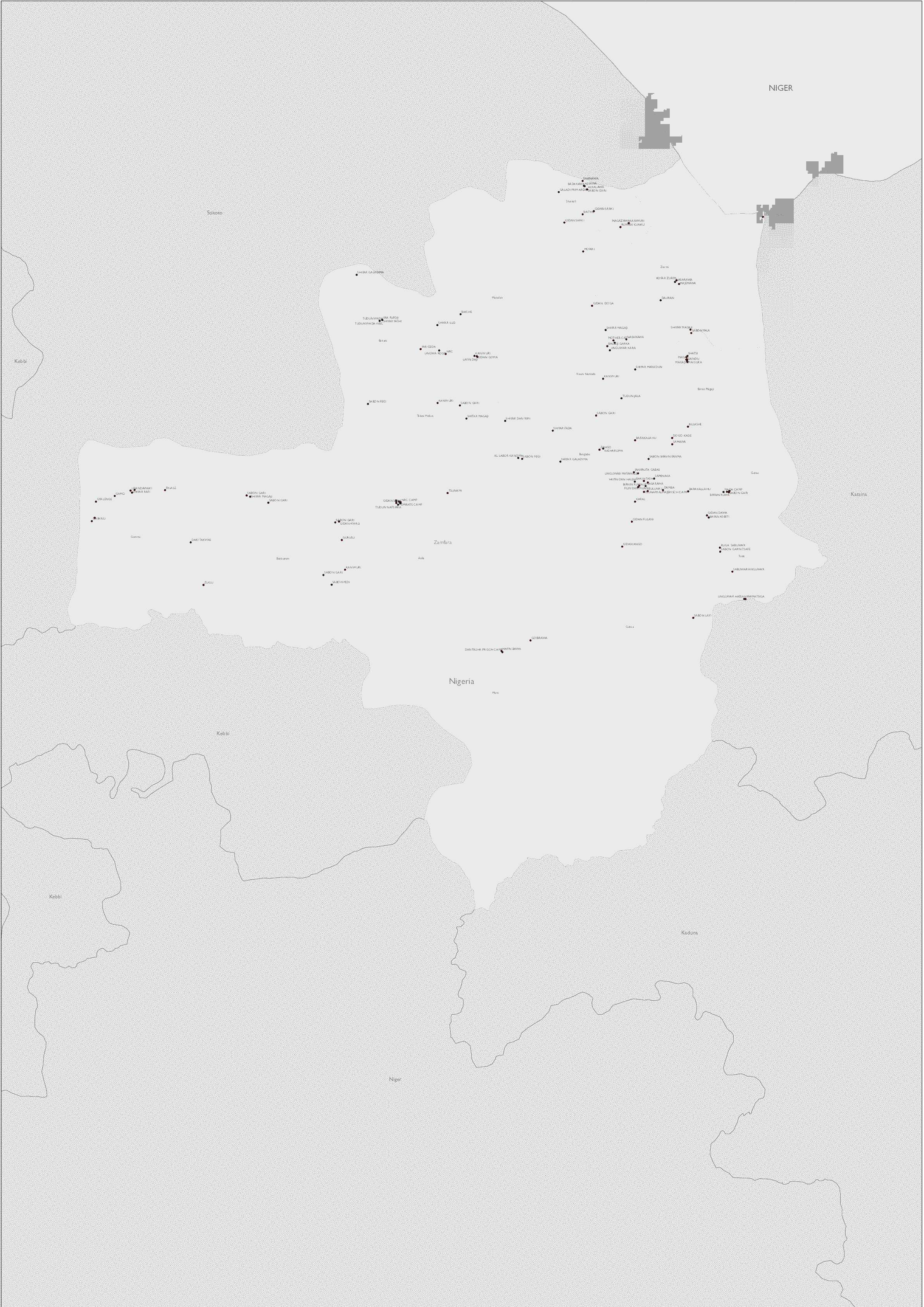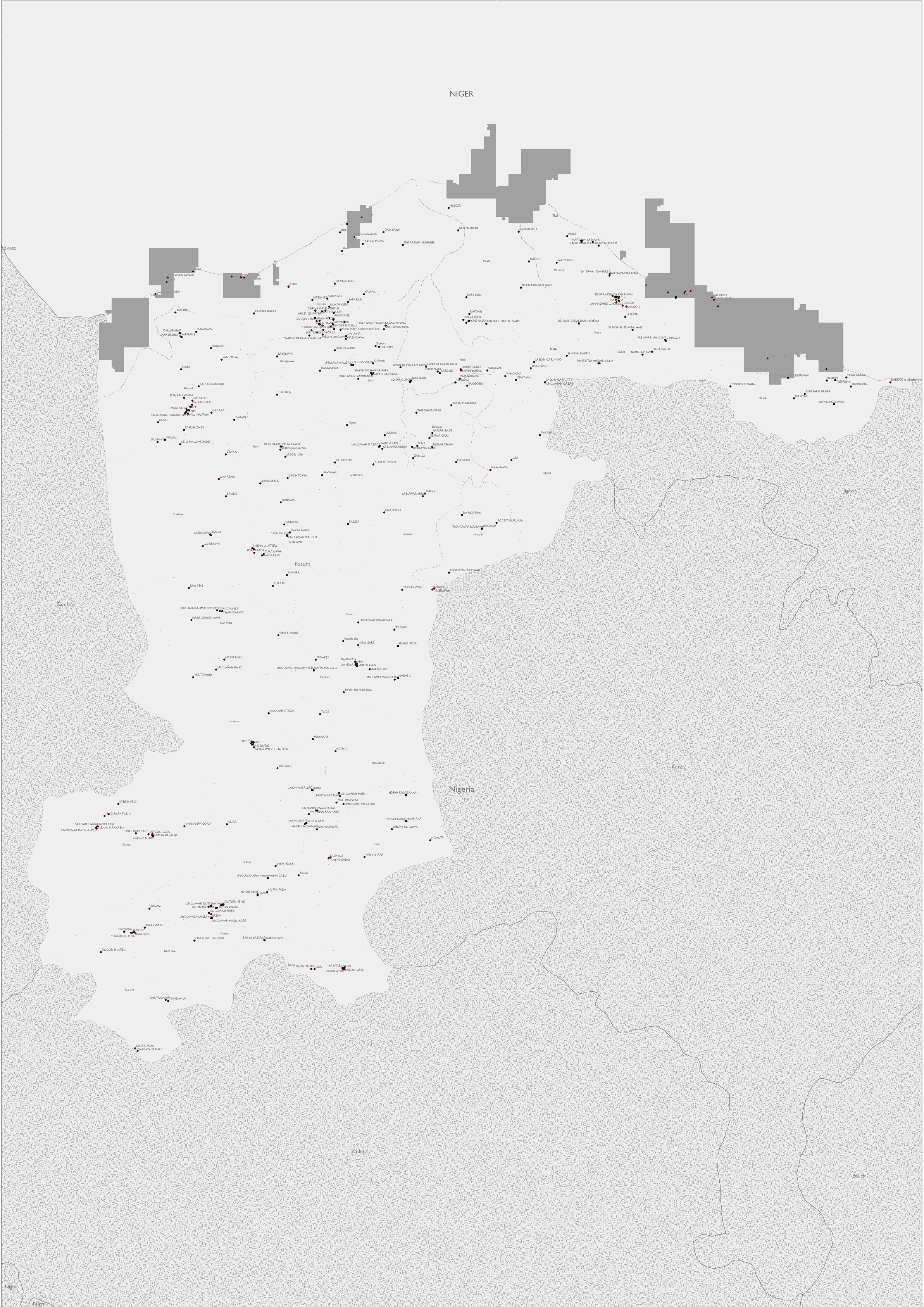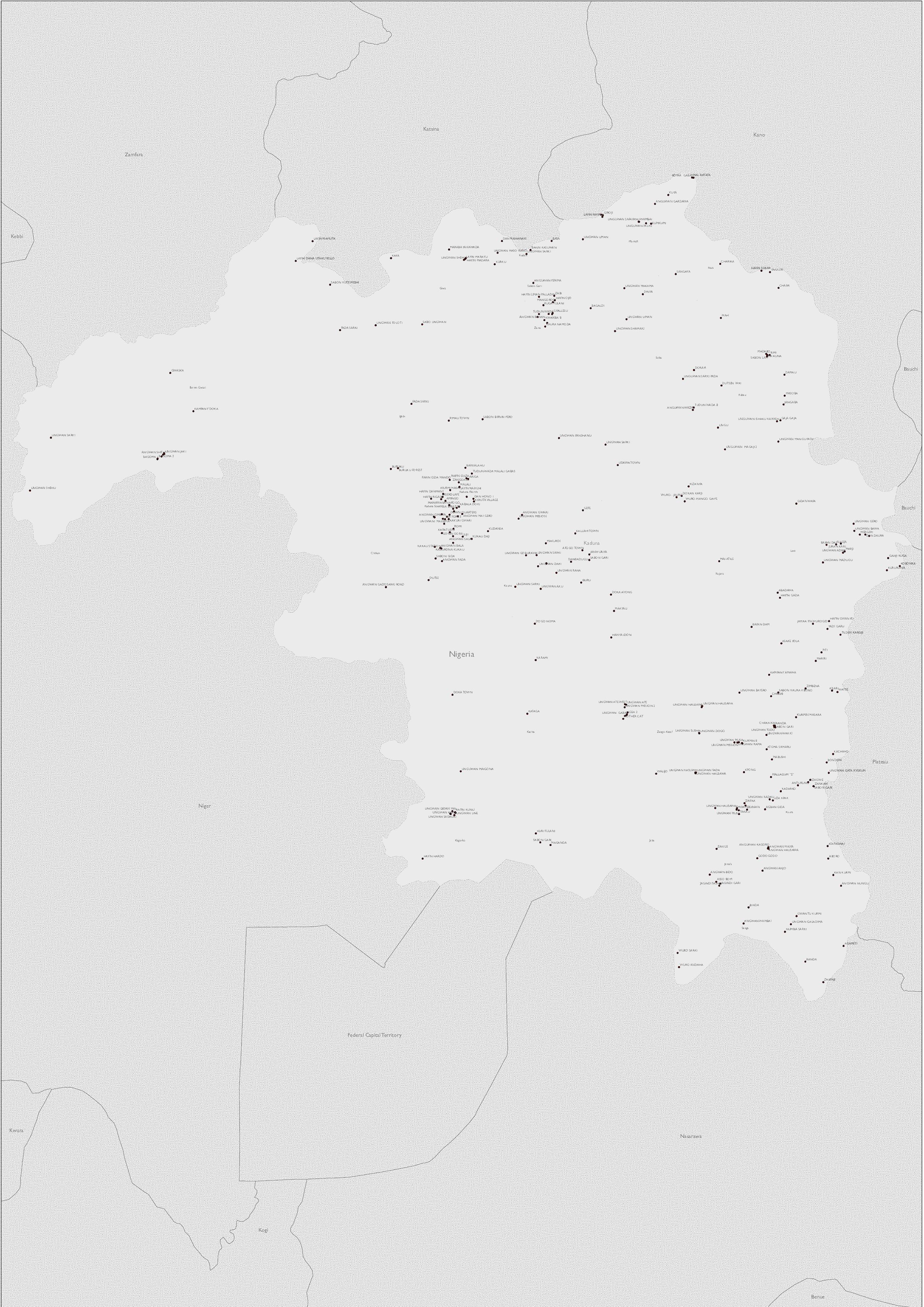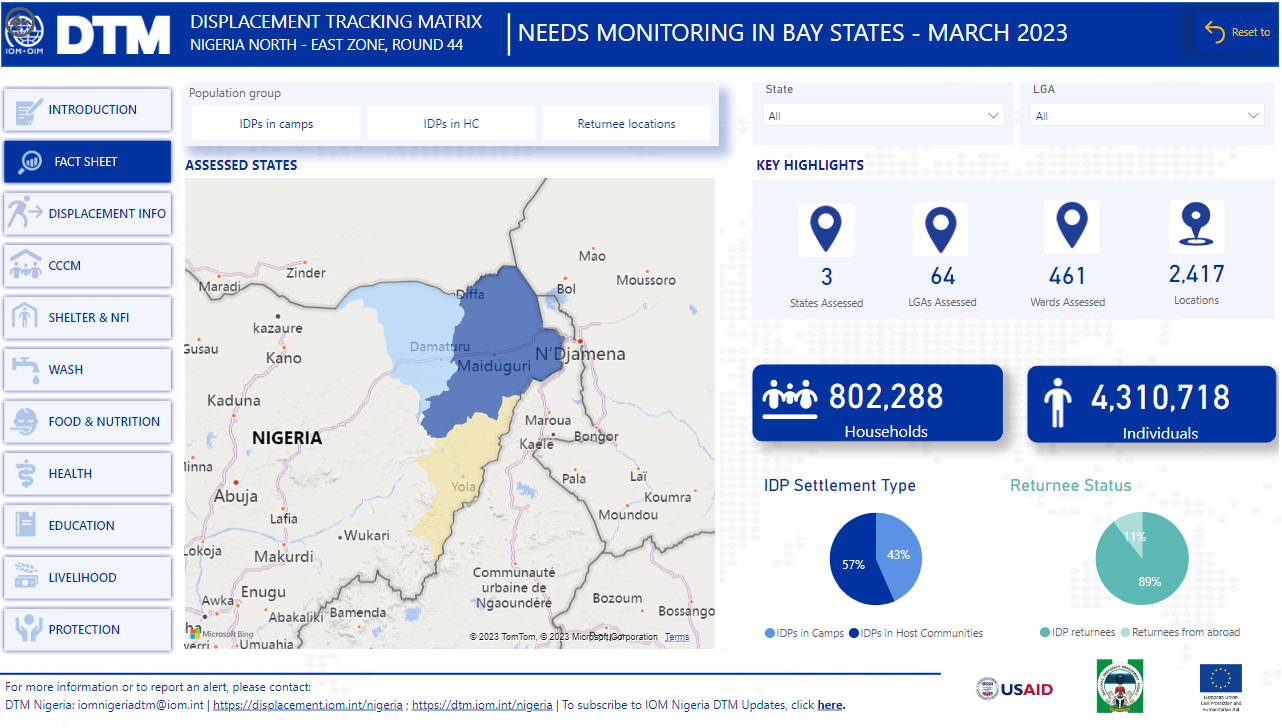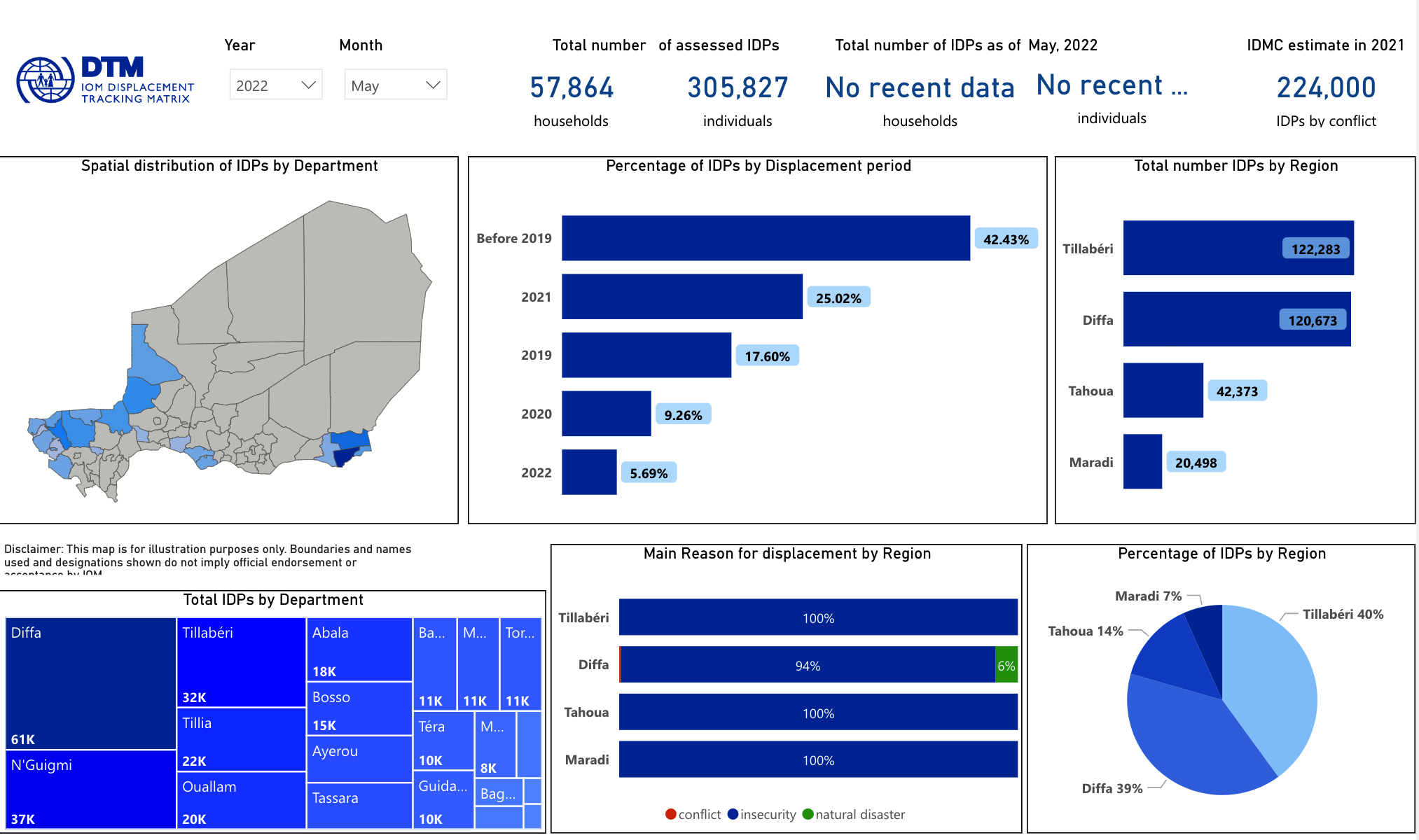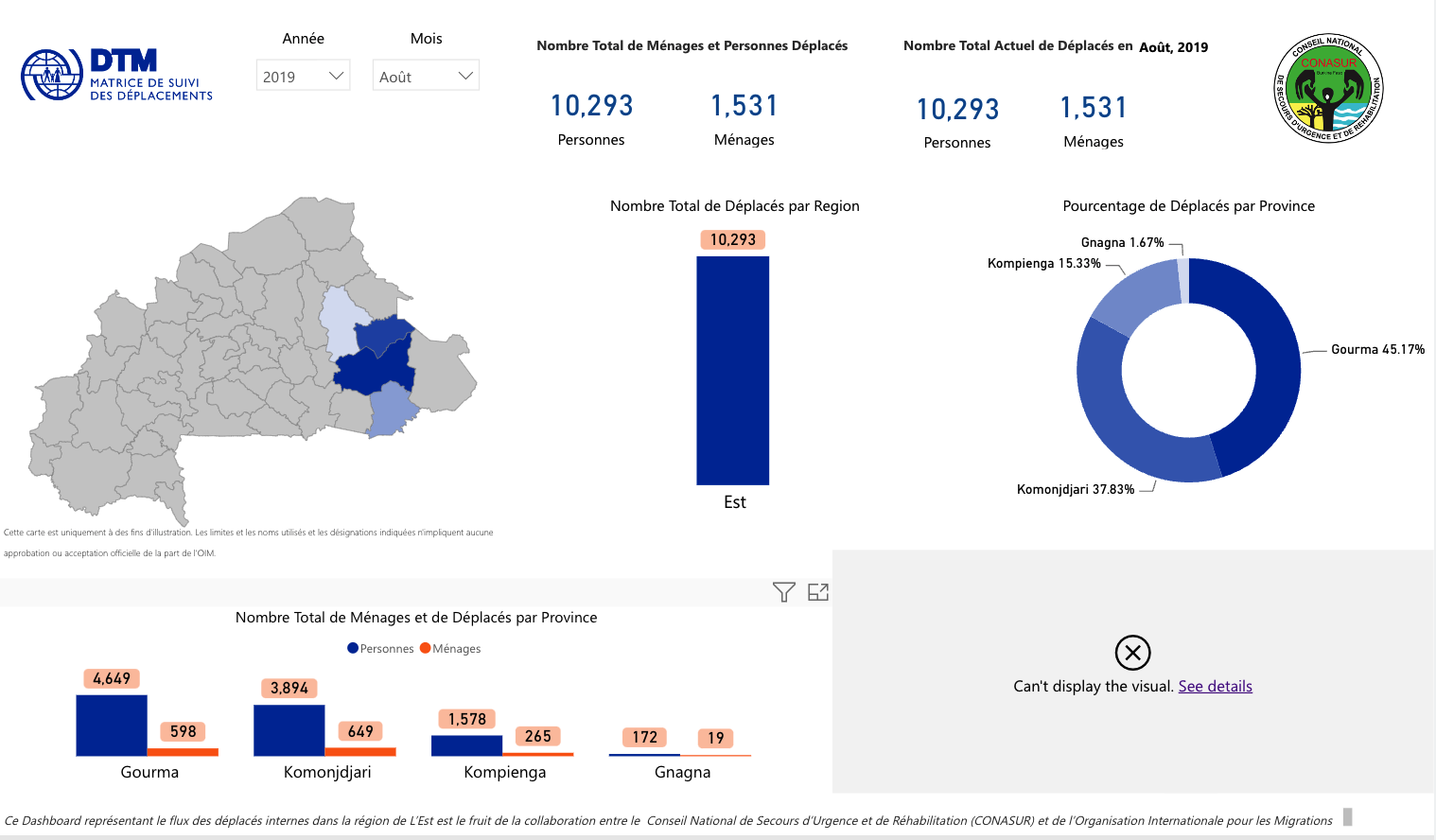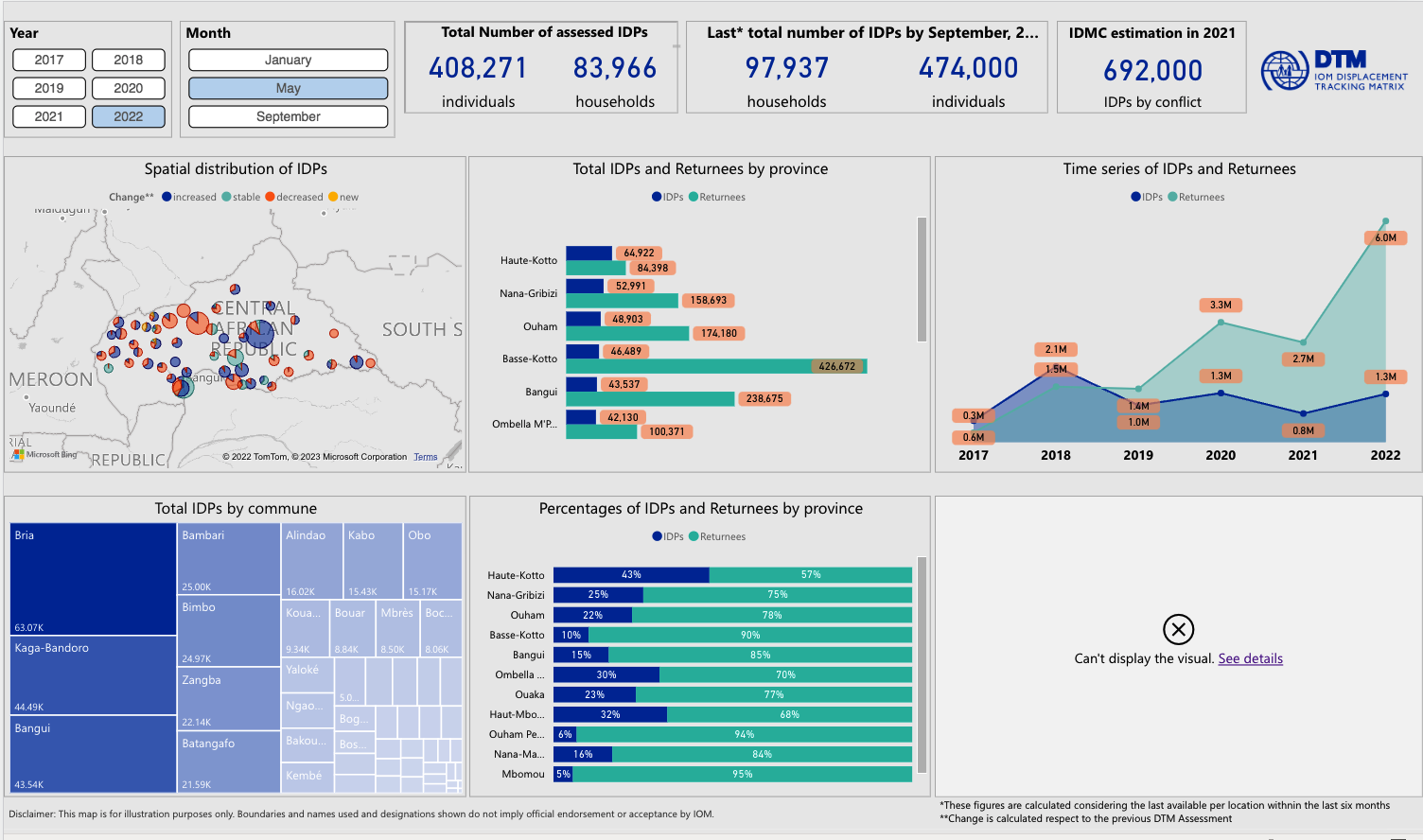-
Countries
-
Data and Analysis
-
Special Focus
-
Crisis Responses
West and Central Africa
DTM West and Central Africa
DTM Operations in the region
- Active DTM operation
- Past DTM operation
Cameroun — Suivi des urgences 113 (13 - 17 Novembre 2024)
Ce tableau de bord présente des informations sur le déplacement de populations des localités de Ldamang
Cameroun — Suivi des mouvements de transhumance - Cartographie - Logone-et-Chari (Avril - Juin 2024)
La transhumance au Cameroun, et en particulier dans l’arrondissement du Logone Birni, région de l’Extrême Nord,
West and Central Africa — Multi-hazard surveillance tool for West African coastal countries: Benin - Côte d’Ivoire - Ghana - Togo (30 September 2024)
The GRANIT was conceived in 2021 in Dakar at the initiative of OCHA, IOM and REACH with the support of the Regional Sectoral Groups, UN agencies and NGOs.
Chad — Situation Update 46 (21 November 2024)
An estimated 910,000 people have crossed into Chad since the onset of the crisis in Sudan, of which 209,153 are Chadian returnees as of beginning of November 2024. IOM expects this number to rise to 240,000 through to December 2024 due to ongoing conflict and food insecurity in Darfur.
Nov 21 2024
Chad — Situation Update 46 (21 November 2024)
Afrique de l'Ouest et du Centre — Groupe régional d'analyse intersectorielle (GRANIT) — Rapport de l'outil de veille dans les pays côtiers d’Afrique de l’Ouest Bénin - Côte d’Ivoire - Ghana - Togo (30 Septembre 2024)
Le rapport d’outil de veille sur la situation dans les quatre pays côtiers du golfe de Guinée (Ghana, Bénin, Togo et Côte d’Ivoire) en date du 31 mai 2024, élaboré par le Groupe régional d’analyse intersectorielle (GRANIT) sous la direction et l’impulsion d’OCHA, de l
Nov 21 2024
Afrique de l'Ouest et du Centre — Groupe régi…
Tchad — Réponse à la crise au Soudan: Bulletin d'informations 46 (21 Novembre 2024)
Environ 910 000 personnes sont estimées avoir traversé la frontière vers le Tchad depuis le début de la crise au Soudan, incluant 209 153 parmi eux qui sont des retournés tchadiens depuis début novembre.
Tchad — Suivi des Urgences 197 (01 - 31 Octobre 2024)
Le suivi des urgences a pour objectif de recueillir des informations sur les mouvements importants et soudains, ainsi que sur les urgences
Chad — Emergency Tracking Tool Report 197 (01 - 31 October 2024)
The purpose of the emergency tracking tool
Mali — Rapport sur les Mouvements de Populations (Septembre 2024)
La Matrice de Suivi des Déplacements, (Displacement Tracking Matrix – DTM, en anglais), est un outil de l’Organisation Internationale pour les Migrations (OIM), qui permet de suivre et de surveiller les déplacements et la mobilité des populations.
Nigeria — Emergency Tracking Tool Report 405 (4 - 10 November 2023)
Between 4 and 10 November 2024, a total of 574 new arrivals were recorded at locations in Adamawa and Borno states.
Nigeria — Emergency Tracking Tool Report 18 (4 - 10 November 2024)
Between 4 and 10 November 2024, 440 new arrivals were recorded at locations in Benue State, including Logo, Guma and Gwer-west local government areas (LGAs).
Nigeria — Kaduna State - Intention Survey (August 2024)
To ascertain the future intentions and aspirations of the IDPs in Kaduna State, the DTM surveyed 22 LGAs where IDPs were situated. Out of the 20,766 displaced households in the state, 2,447 were interviewed. All IDP households interviewed reside in host communities.
Nigeria — Kogi State - Intention Survey (August 2024)
To understand the future intentions and aspirations of IDPs in Kogi State, DTM surveyed eight (8) LGAs where IDPs were situated. Out of the 1,944 displaced households in the state, 209 were sampled and interviewed.
Tchad — Suivi des Urgences 196 (15 Novembre 2024)
Le suivi des urgences a pour objectif de recueillir des informations sur les mouvements importants et soudains, ainsi que sur les urgences liées
Nigeria — Sokoto - Intention Survey (August 2024)
To ascertain the future intentions and aspirations of the IDPs in Sokoto State, the DTM surveyed 21 LGAs where IDPs were situated. Out of the 17,454 displaced households in the state, 2,317 were interviewed.
Nigeria — North-central & North-west - Intention Survey (August 2024)
The issue of internal displacement in north-west and north-central Nigeria has persisted for over a decade, with a significant population of 1,092,196 people remaining displaced for extended periods.
Nov 15 2024
Nigeria — North-central & North-west - Intenti…
Cameroun — Suivi des urgences 112 (10 Novembre - 12 Novembre 2024)
Ce tableau de bord fournit des informations sur le déplacement de populations de la localité de Bideiné qui se sont con
Nigeria — Kano State - Intention Survey (August 2024)
To ascertain the future intentions and aspirations of the IDPs in Kano State, the DTM surveyed 32 LGAs where IDPs were situated. Out of the 2,642 displaced households in the state, 512 were sampled and interviewed.
Nigeria — Nasarawa - Intention Survey (August 2024)
To discern the future aspirations and intentions of IDPs in Nasarawa State, the DTM surveyed thirteen (13) LGAs where IDPs were situated. Out of the total 3,989 displaced households in the state, a sample of 660 were interviewed.
Nigeria — Benue State - Intention Survey (August 2024)
To understand the future intentions and aspirations of IDPs in Benue State, the DTM surveyed 16 LGAs where IDPs were located. From a total population of 70,597 displaced households in the state, a sample of 3,877 households participated in the survey.
Nigeria — Niger - Intention Survey (August 2024)
To understand the future intentions and aspirations of IDPs in Niger State, DTM surveyed 13 LGAs where IDPs were situated. Out of the total 3,447 displaced households in the state, 532 households were sampled and interviewed.
Nov 15 2024
Nigeria — Niger - Intention Survey (August 2024)
Nigeria — Katsina State - Intention Survey (August 2024)
To ascertain the future intentions and aspirations of the IDPs in Katsina State, the DTM surveyed 33 LGAs where IDPs were situated. Out of the 32,281 displaced households in the state, 3,587 were interviewed.
Mali — Rapport trimestriel sur les flux migratoires au Mali (Juillet - Septembre 2024)
Le suivi des flux de population a pour but de recueillir des données sur les flux et tendances migratoires, les profils des voyageurs et les parcours et intentions des migrants, afin de fournir une meilleure compréhension des mobilités en Afrique de l’Ouest et du Centre
Nigeria — Zamfara - Intention Survey (August 2024)
To ascertain the future intentions and aspirations of the IDPs in Zamfara State, the DTM surveyed 13 LGAs where IDPs were situated. Out of the 23,668 displaced households in the state, 2,366 were interviewed.
Pagination
Nigeria — Site Assessment — Round 47 (North-east) — IDPs and Returnee
Oct 31 2024
<p>In Round 47, a total of 2,271,987 Internally Displaced Persons (IDPs) were identified in 468,013 households. This signifies a slight decrease of one per cent (or 33,348 individuals) compared to Round 46 when 2,305,335 IDPs were recorded (December 2023). During Round 47, IDP assessments…
Central African Republic — Baseline Assessment — Round 22
Oct 09 2024
<p>This dataset offers an overview of national displacement dynamics. Data was collected between August 1 and September 9, 2024, across 16 prefectures and the capital, Bangui, covering 4,521 localities hosting IDPs and/or returnees, as well as 69 displacement sites. During this round 22, a…
Central African Republic — Baseline Assessment — Round 21
Oct 09 2024
<p>This dataset provides an overview of national displacement dynamics. Data was collected between April 1 and May 9, 2024, across 16 prefectures and the capital, Bangui. During this round 21, a total of <strong>446,614 IDPs</strong>, <strong>2,256,970 internal returnees…
Benin - Mobility Tracking - Round 2 (February 2024)
Sep 09 2024
<p>In round 2, <strong>12,501</strong> IDP individuals were identified. Among them, <strong>4,564 </strong>were children under 18 years old.</p>
Nigeria — Site Assessment — Round 46 (North-east) — IDPs
Aug 16 2024
<p>In Round 46, a total of 2,305,335 Internally Displaced Persons (IDPs) were identified in 472,239 households. This signifies a slight increase of less than one per cent (or 9,801 individuals) compared to Round 45 when 2,295,534 IDPs were recorded (June 2023). During Round 46, IDP…
Nigeria — Site Assessment — Round 45 (North-east) — IDPs
Aug 16 2024
<p>As of June 2023, the DTM identified a total of 2,295,534 IDPs in 471,346 households and 2,075,257 returnees in 341,895 households. The IDP population included IDPs in camps and camp-like settings (921,201 individuals or 40%) and IDPs residing in host communities (1,374,333 individuals or…
Chad — Site and Village Assessment - Lac Province — Round 23
Aug 05 2024
<p>This dataset presents the results of evaluations conducted between May 7 and June 8, 2024, in 293 displacement locations. Comparing Round 23 with Round 22 in terms of the total displaced population, we observe a slight increase of 0.2%, which is insignificant as it represents fewer than…
Nigeria — North-central And North-west Zones Site Assessment Round 13
Jul 26 2024
<p>As of December 2023, DTM identified a total of 1,092,196 internally displaced persons (IDPs) in 183,437 households across Benue, Kaduna, Kano, Katsina, Nasarawa, Plateau, Sokoto, and Zamfara states. The data collection started in December 2023 in 1,646 locations, in the eight states of…
Nigeria — North-central And North-west Zones Site Assessment Round 12
May 20 2024
<p>Round 12 of DTM data collection in Nigeria’s north-west and north-central regions was conducted between 13 September and 24 October 2023. During the activity, DTM deployed teams of enumerators to conduct assessments in 826 wards (down from the 881 wards assessed in Round 11 of DTM…
Mali — Baseline Assessment — Round 79
Apr 24 2024
<p>During the data collection and update operation conducted in December 2023, a total of<strong> 354,739</strong> IDPs were identified. The number of IDPs indeed decreased from<strong> 391,961 </strong>individuals in September 2023 (<a href="https://dtm.iom.…
Cameroon — Extrême-Nord - Multi-Sectoral Needs Assessment (MSNA) — Round 4
Apr 17 2024
<p>The round 4 data collection was conducted between August 18 and August 29, 2023, among 5,801 households in the six departments (Diamaré, Logone-Et-Chari, Mayo-Danay, Mayo-Kani, Mayo Sava, and Mayo-Tsanaga) of the Extreme North region. This was done using a questionnaire developed by IOM,…
Cameroon — Baseline Assessment — Round 27 (Aug-2023)
Apr 17 2024
<p>Data collection for round 27 was conducted from 18 to 29 August 2023 through 3,715 key informants, accross 1,283 localities. During this round, 700,766 internally displaced individuals were identified, including 453,661 IDPs, 198,940 Returnees, and 48,165 Out-of-camp refugees</p>
Chad — Site and Village Assessment - Lac Province — Round 22
Feb 29 2024
<p>From December 22nd 2023 to January 24th 2024, the DTM Chad has conducted the round 22 of Sites and Villages assessment accross 305 locations.</p><p>During this round, a total of 261,672 displaced individuals were identified, including 219.393 internally displaced persons, 25,…
Central African Republic — Baseline Assessment — Round 20
Feb 27 2024
<p>The assessment was conducted in 4,410 locations where IDPs and/or returnees are present, as well as 77 displacement sites. Data collection took place between December 2, 2023, and January 9, 2024, across the country's 16 prefectures, including the capital, Bangui.</p>
Niger — Village Assessment Survey — Round 7
Feb 23 2024
<p>In Round 7, <strong>378 868 </strong>IDP individuals and <strong>74 358</strong> IDP households, <strong>163 611</strong> returnees and <strong>24 429</strong> returnee households were identified.</p>
Chad — Site and Village Assessment - Lac Province — Round 21
Jan 31 2024
<p>From October 5th 2023 to November 8th 2023, the DTM team in Chad has conducted the round 21 of Sites and Villages assessment accross 281 locations.</p><p>During this round, a total of 242,205 displaced individuals were identified, including 199,198 internally displaced persons…
Central African Republic — Baseline Assessment — Round 19
Sep 22 2023
This dataset presents national travel dynamics. The assessment was conducted at 4,224 locations of IDP occurrence and/or return and 79 displacement sites. Data collection took place between August 1 and September 8, 2023 in the country’s 16 prefectures in addition to the capital Bangui.
Nigeria — Site Assessment — Round 44 (North-east) — IDPs
May 10 2023
<p>A site assessment is a sub-component of mobility tracking. It aims to collect data on population presence, living conditions and needs in a particular displacement site or community. Data collection for IDPs took place between December 2022 and February 2023 in 2,482 localities in the six…
Pagination
Nigeria — North-east — Returnees Comparison at Location Round 47 (June 2024)
Returnee comparison at the Location level. Change in the number of returnees compared to Round 46.
Nigeria — North-east — Returnees Comparison at LGA Level Round 47 (June 2024)
Returnee comparison at the Local Government Area (LGA) level. Change in the number of returnees compared to Round 46.
Nigeria — North-east — Period of Return of Returnees from Abroad at LGA Level Round 47 (June 2024)
Period of arrival of returnees who arrived from abroad.
Nigeria — North-east — Period of Return of Returnees from within Nigeria at LGA Level Round 47 (June 2024)
Period of arrival of returnees who arrived from within Nigeria.
Nigeria — North-east — Returnees by LGA Round 47 (June 2024)
Returnees by LGA.
Nigeria — North-east — IDP Reasons for Displacement Round 47 (June 2024)
IDP reasons for displacement
Nigeria — North-east — IDP Comparison at Location Level Round 47 (June 2024)
IDP comparison at the location. Change in the number of IDPs compared to Round 46.
Nigeria — North-east — IDP Comparison at LGA Level Round 47 (June 2024)
IDP comparison at the Local Government Area (LGA) level. Change in the number of IDPs compared to Round 46.
Nigeria — North-east — IDPs Reasons for Displacement — Farmers-Herders clashes/Armed banditry Round 47 (June 2024)
IDPs — Reasons for displacement (Farmers-Herders clashes/Armed banditry)
Nigeria — North-east — IDPs Reasons for Displacement — Natural disaster Round 47 (June 2024)
IDPs — Reasons for displacement (Natural disaster)
Nigeria — North-east — IDPs Reasons for Displacement — Insurgency Round 47 (June 2024)
IDPs — Reasons for displacement (Insurgency)
Nigeria — North-east — IDPs Reasons for Displacement — Communal Clashes Round 47 (June 2024)
IDPs — Reasons for displacement (Communal Clashes)
Nigeria — North-east — IDPs per Period of Displacement at the LGA Level Round 47 (June 2024)
IDPs per period of displacement at the LGA level.
Nigeria — North-east — IDPs per Period of Displacement at the State Level Round 47 (June 2024)
IDPs per period of displacement at the State level.
Nigeria — North-east — IDPs per LGA Round 47 (June 2024)
Distribution of IDPs by LGA.
Nigeria — North-east — Return Locations Round 47 (June 2024)
Distribution of return locations.
Nigeria — North-east — IDP Locations Round 47 (June 2024)
Distribution of IDP locations.
Nigeria — North-east — IDPs and Returnees by State Round 47 (June 2024)
Estimated number of IDPs and Returnees by State.
Nigeria — North-central & North-west — States Map Round 13 (March 2024)
Map of states in North-central and North-west Nigeria











